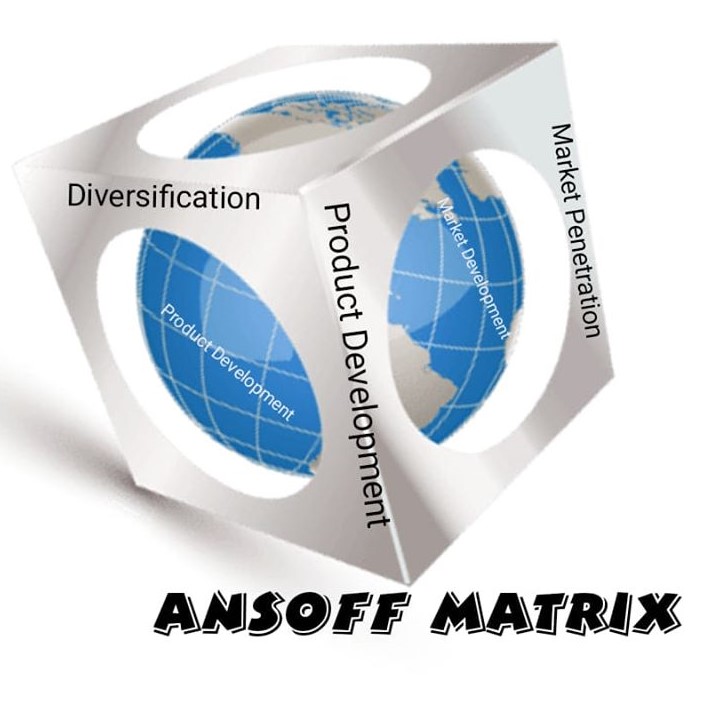The hospitality industry includes various hotels, resorts, restaurants, guest houses, lodges, tourist guides, airlines, theme parks, cruise ships, event planning, and various others that have any relation to the tourism and lodging organizations (BLS, 2019). This is one of the most dynamic industries which are rapidly changing with respect to various factors. These include changes in technology, customer service, organizational management, designs, innovation, and so on. The industry requires that its consumers have leisure time and income to avail its services. Customer satisfaction plays a vital role in the success of an organization in this industry. The level of competition is high and the services delivered must need customer needs. Organizations in this industry strive to develop and maintaining their reputation and gaining customer loyalty.
Following are the four dimensions of the Ansoff Matrix for the hospitality industry:
Market Penetration
This refers to the act of selling existing products in existing markets. This is one of the greatest ways for the hospitality industry to earn. There are various strategies used in this regard. The first strategy the industry uses is to offer discounts to returning customers. Various hotels offer small discounts to the customer coming back for availing their services. Another strategy is to issues loyalty cards that allow certain customers to avail discounts. Discounts may also be offered during certain seasons to attract customers. These can be in the form of a reduction in the price of services or offering certain services free with other services. Family offers are also common in the hospitality industry. Various honeymoon packages, tours, and other packages are also arranged by hospitality companies to make travel and stay easier for customers. The main idea is to motivate consumers to use more of the services provided by the providers. Various hotels and airlines have also acquired smaller competitors to reduce competition and gain greater market share. Strategic alliances also exist in the industry to help reduce prices (Booth, 2012). All of these measures lead to greater sales.
Market Development
Market development is the act of promoting existing products in new markets. The prime strategy used by the hospitality industry is to open new outlets. For airlines, this means offering new routes. Geographical expansion allows companies to cater to new consumers in new markets. Hotels and resorts can open their hotels in new markets. An example of this is the opening of Marriott International Hotels in Pakistan. Another strategy these companies in the industry employ is to cater to new market segments in the regions they are already serving by offering new services of different prices. An example of this can be super-luxury rooms offered by hotels and resorts targeting the upper-class of society. Similarly, they can target sports lovers by offering tourism packages that only include sports arenas and similar activities. Pricing and service variations allow the hospitality industry to target new market segments.
Product Development
When an organization launches new products in its existing markets, it is working on product development. The hospitality industry works on product development in various ways. Hotels and resorts can offer rooms with innovation facilities that were not being offered earlier. Airlines can serve unique meals catering to the needs of the region they operate in. Tourism companies can offer packages to new destinations. Various facilities already offered are also renovated from time to time to ensure they are at their best. The hospitality industry has to study the market and consumer feedback in detail before it can start working on and launch a new product. Once a product is launched, massive marketing is carried out to generate awareness. Product development is an innovative way to generate more revenue.
Diversification
Diversification is the strategy of promoting new products in new markets. The hospitality industry can vertically integrate by planting and cooking their own food, performing their own maintenance, offering transportation services, adding tour packages to their stay, and so on. Vertical diversification allows greater hold over the company supply chain. Another strategy is to diversify into various related services within the industry. For example, a hotel can start its tourism services. It can also open its resort. Unrelated diversification is another option. Members of the hospitality industry can start their manufacturing businesses, marketing businesses, consultancy, and so on.
References
BLS, 2019. Industries at a Glance. [Online] Available at: https://www.bls.gov/iag/tgs/iag70.htm [Accessed 17 Jan. 2020].
Booth, D., 2012. Long Layover? Many Airport Hotels Offer Day-Room Rates. [Online] Available at: https://www.cnbc.com/id/100324884 [Accessed 17 Jan. 2020].
